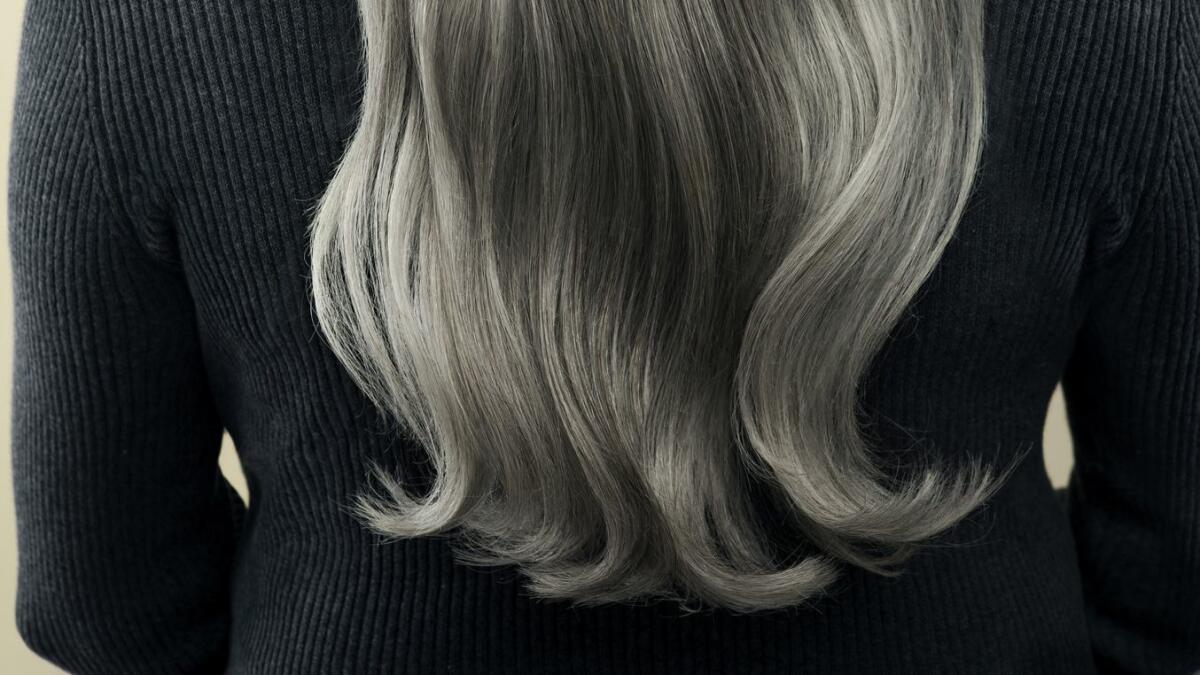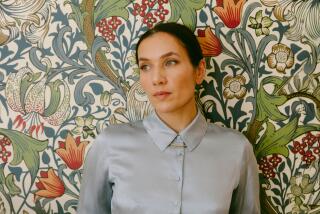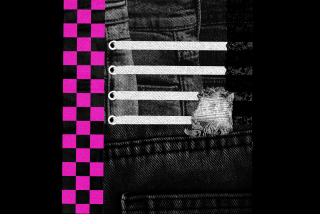Op-Ed: Going gray gave me a sense of freedom I didn’t even know I was seeking

Gray is bad. Right?
It’s associated with gloomy weather, overcooked meat and depression. It’s the color championed by real estate agents to turn colorful, lived-in homes into neutral spaces without personality. “Shades of gray” allows for nuance; it also provides shelter for dishonesty.
I’ve always found it interesting that gray signifies “old” on women but translates to “distinguished” on men. So the moment that I told a roomful of television producers (mostly male) that I was no longer going to color my gray hair, their concerns were immediate: How would my “you can’t tell me what to do” moment translate into TV ratings?
To be honest, I didn’t care about ratings in that moment of rebellion. (And by the way, they didn’t fall.) I was tired of spending several hours in a salon every month or so, hours that I started to feel could be better spent doing, well, anything else.
From the moment we are born, we are judged by our appearance. Ignoring that judgment is difficult, even when we know we should. Women struggle to fit into jeans that are too tight, wear flats if heels would make us taller than our prom dates, fret over freckles. But hair — in any color, style or texture — is a category unto itself. We are constantly straightening it, curling it, cutting it, adding extensions to it, teasing it, spraying it, and don’t even get me started on how many bottles and jars of shampoos, conditioners and other hair products are littering my bathroom shelves.
I have my insecurities, but when I look in the mirror, I’m happy with the reflection I see, gray hair and all.
I don’t have a problem with anyone coloring their hair. I did it myself for years, sometimes to bring out richer tones of my natural brown, or just to try something fun and different. But once I started working in television, as the gray started to come in during my late 40s, I colored my hair because I felt compelled to cover it up. It took about six years on camera before I finally decided I was tired of being told how I needed to look. I embraced the gray.
What I didn’t expect was that going gray would represent a turning point in how I approached both my career and my personal goals.
I’ve often spoken in public about my personal mantra: “Say yes. Adventure follows. Then growth.” Through the process of saying yes, I’ve also learned the power of saying no. When I said no to coloring my hair, I said yes to parts of myself that I was hiding — which turned out to be far more than just a few gray hairs. I stopped docilely following someone else’s vision of my life. Going gray gave me freedom that I didn’t even know I was seeking.
I found myself speaking up in ways I hadn’t before. When my cookbook editor said doing a soul food book might limit my audience, I persevered. With my previous cookbooks, I went along with the advice of others, rather than trusting my own voice. When I felt like the vibe wasn’t right with a particular PR agency, I made a switch in a matter of weeks — my non-gray self might have stayed for the long haul, hoping for the best.
Women frequently thank me for my decision to go gray, and for talking about it publicly. They voice their own frustrations with how society views women as they age. But I also hear plenty of criticism from people, both male and female, who tell me, in no uncertain terms, that my salt-and-pepper hair is ugly.
Enter the Fray: First takes on the news of the minute from L.A. Times Opinion »
My response is always the same: I have my insecurities, but when I look in the mirror, I’m happy with the reflection I see, gray hair and all, and I’m OK with it even if you don’t like it. I know how I want to use my voice, how I can make an impact, and I intend to use the power that comes from loving my gray to help me do it, even if it means not taking the obvious route.
Recently, I was getting on a flight when a fellow passenger asked to take a selfie with me. She was a young woman with beautiful long gray hair, which was clearly not her natural color. I complimented her gray, she complimented mine. I asked her if she’d keep dying it gray; she said yes at least until, as her companion put it, she’d “earned those gray hairs.”
It was a moment that showed me that women are starting to accept that gray can be beautiful at any age, whether it happens chemically or naturally. On Instagram these days I see gray hair cutting across a wide demographic, spawning hashtags like #silversisters and #greyhairdontcare. Gray is simply another shade on the color spectrum that we can adopt because we love the subtle silver tones or because we think it celebrates the accumulated wisdom that comes with age —- either way, it’s the choice that is important.
Gray is good. Right?
Chef Carla Hall’s latest cookbook “Carla Hall’s Soul Food: Everyday and Celebration” was published in October.
Follow the Opinion section on Twitter @latimesopinionand Facebook
More to Read
A cure for the common opinion
Get thought-provoking perspectives with our weekly newsletter.
You may occasionally receive promotional content from the Los Angeles Times.











